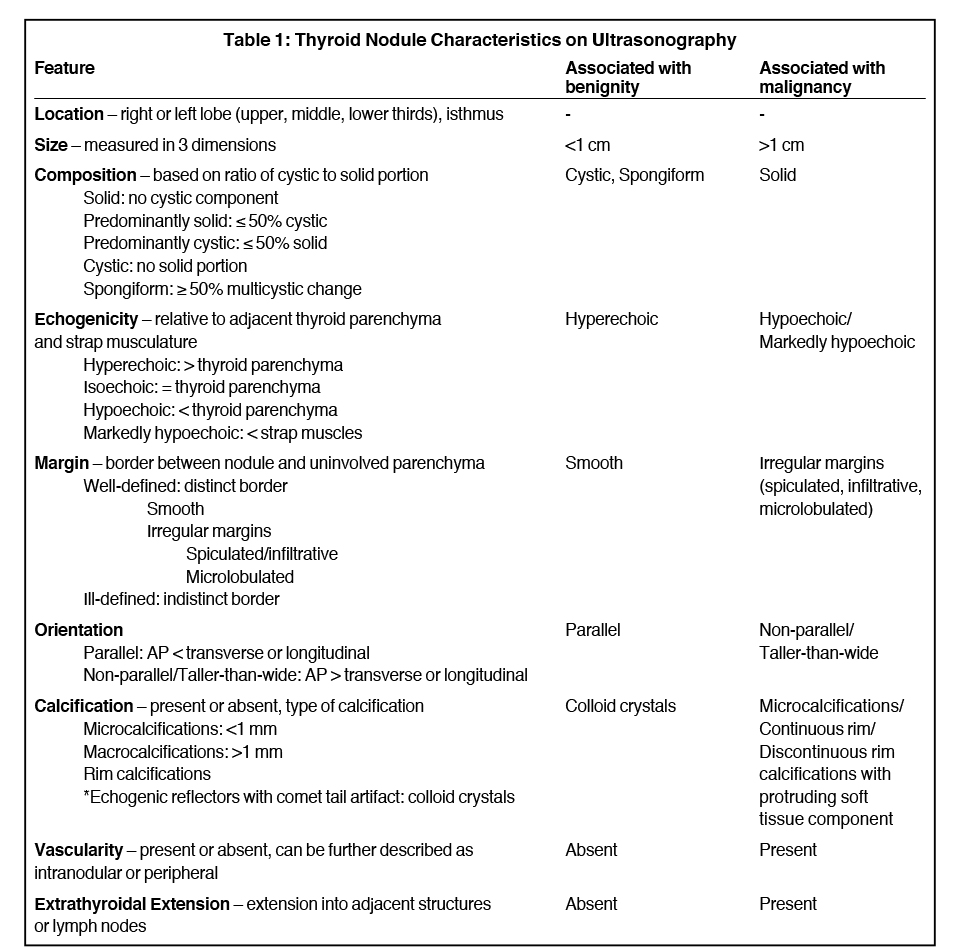To the Editor March 2019
Images

To the Editor:
I read with interest the review article, “Imaging of Thyroid Nodules,” in the January-February 2019 issue of Applied Radiology. I wish to point out what I believe to be two oversights in Table 1. First, the table indicates that “hyperechogenicity” is associated with malignancy; this is likely a typographical error. Rather, both the ACR1 and Korean-TIRADS2,3 indicate that a “markedly hypoechoic” nodule is associated with malignancy. The authors confirm this in both the text and figure 4D. Second, the table indicates that continuous rim calcifications are associated with benignity; this is no longer thought to be correct. Specifically, the ACR-TIRADS1 considers continuous rim calcifications to be a risk factor for malignancy, and assigns such calcification two points in its scoring system (even greater than for intranodular macrocalcification, which is assigned only one point). Finally, rim calcification that obscures the underlying nodule is now thought to be a risk factor for malignancy, and places such a nodule in the intermediate suspicion category within the Korean-TIRADS paradigm.4
William A. Rubenstein, MD
Clinical Associate Professor of Radiology
Weill Cornell Medicine
- Tessler DN, Middleton WD, Grant EG et al. ACR thyroid imaging, reporting and data System (TI-RADS): white paper of the ACR TI-RADS committee. J Am Coll Radiol. 2017;154: 587-595.
- Moon W-J, Baek JH, Juing SL et al. Ultrasonography and the ultrasound-based management of thyroid nodules: consensus statement and recommendations. Korean J Radiol. 2011; 12: 1-14.
- Shin JH, Baek JH, Chung J et al. Ultrasonography diagnosis and imaging-based management of thyroid nodules: revised Korean society of thyroid radiology consensus statement and recommendations. Korean J Radiol. 2016; 17: 370-395.
- Na DG, Kim DS, Ryoo JW et al. Thyroid nodules with isolated macrocalcification: malignancy risk and diagnostic accuracy of fine needle aspiration and core needle biopsy. Ultrasonography. 2016; 35: 212-219.
The corresponding author responds
We appreciate your comments. As you correctly identified, Table 1 does contain errors regarding nodule echogenicity and rim calcifications. A nodule that is hypoechoic, rather than hyperechoic, is associated with malignancy, which we describe in the body of the article as you aptly noted. In addition, rim calcifications are associated with malignancy rather than benignity. Thank you again for taking the time to read our article and for your comments.
Ryan Chung, MD
NYU Langone Health Radiology
Editor’s note: The online version of this article has been updated accordingly.